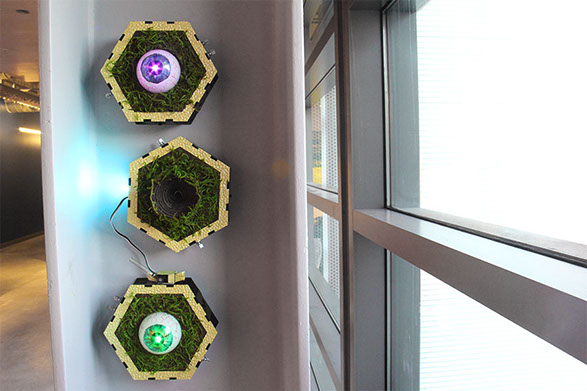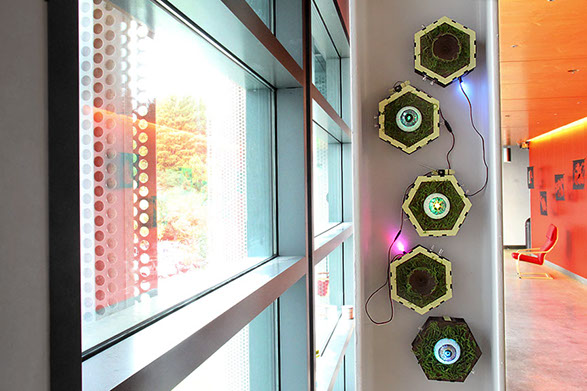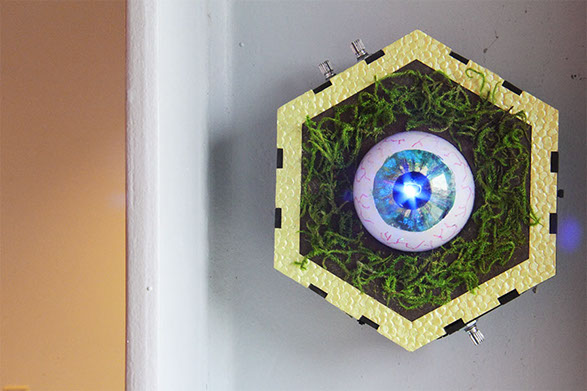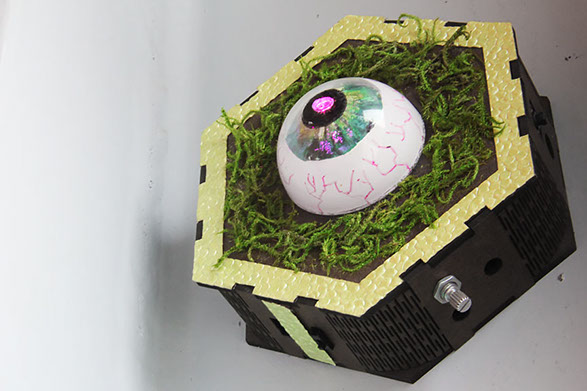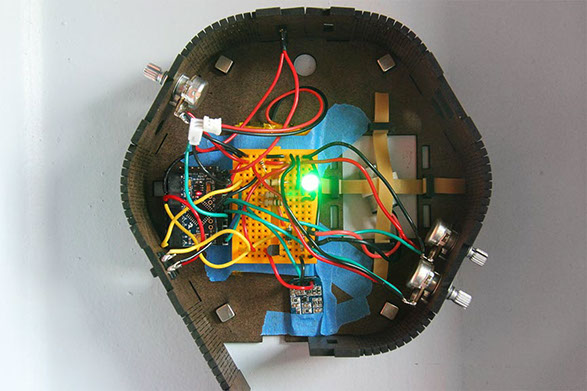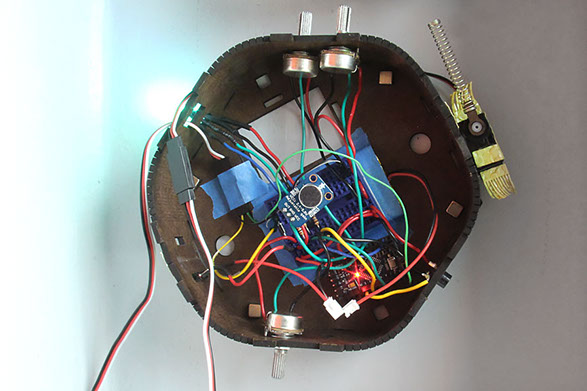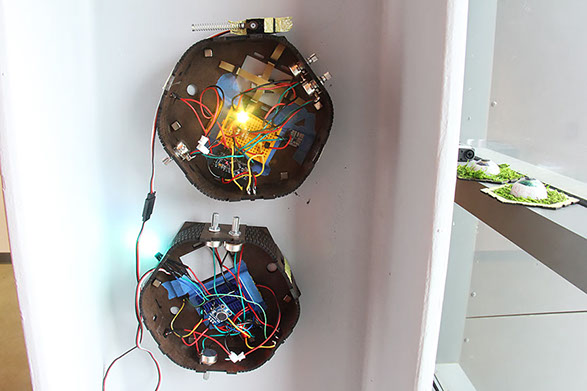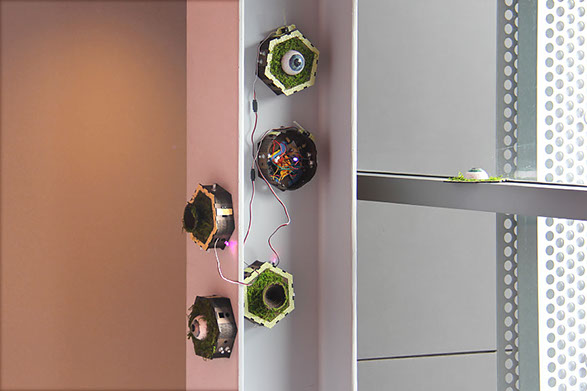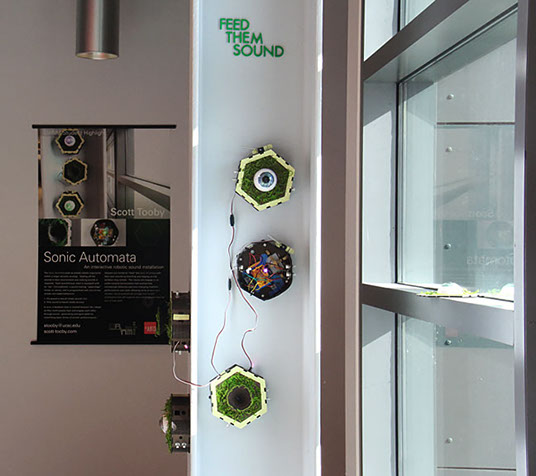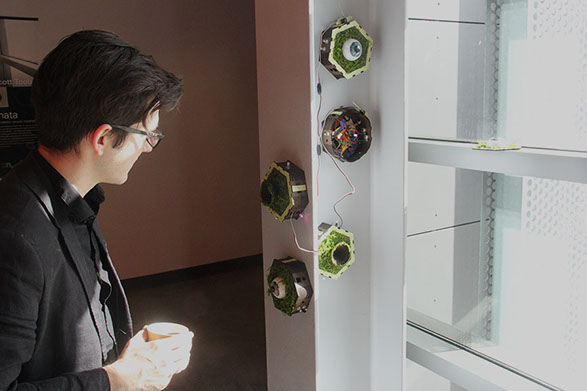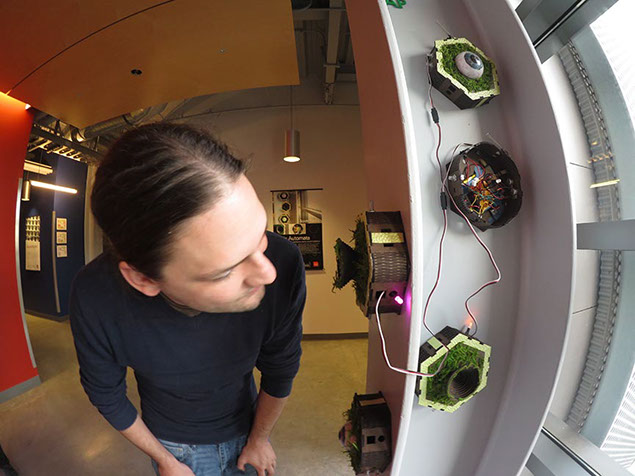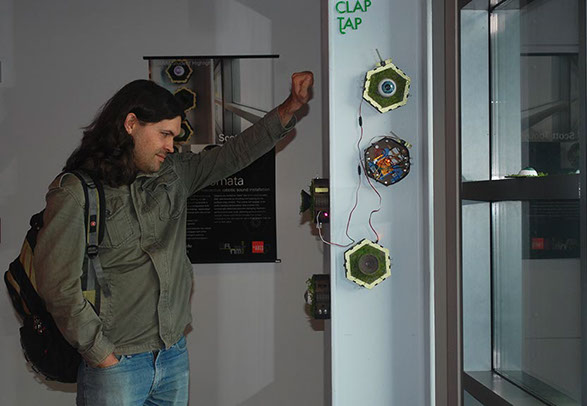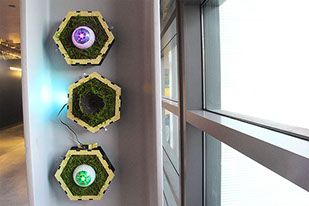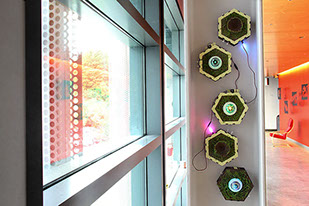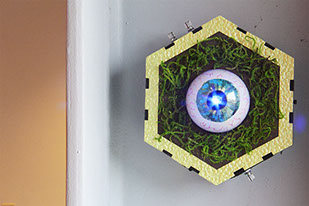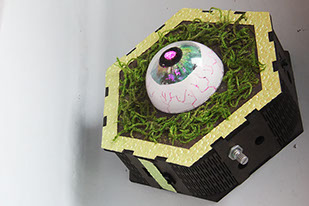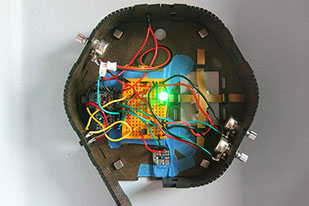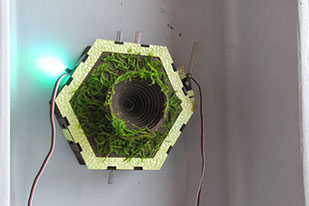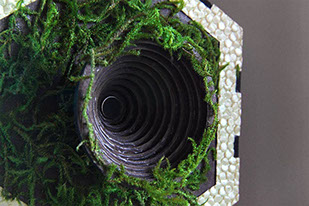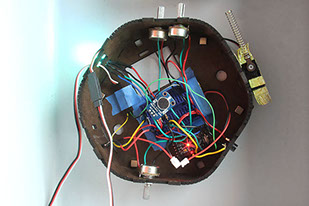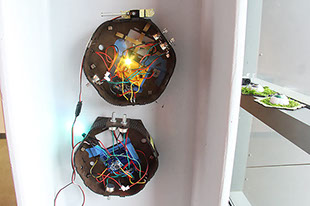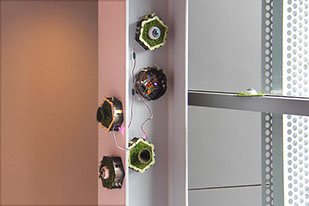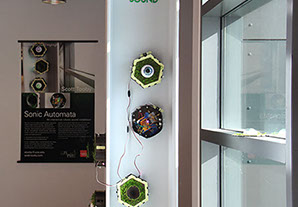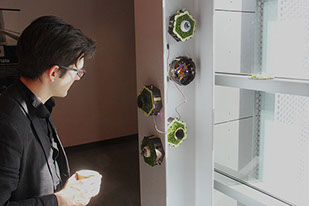SCOTT TOOBY
Sonic Automata
An interactive, autonomous, audio-reactive, robotic sound installation exhibited at UC Santa Cruz in December, 2015.
Sonic Automata is composed of simple robotic organisms that exist within a larger acoustic ecology - feeding off the sounds in their environment and making sounds in response. Each autonomous robot is equipped with an “ear” (microphone), a sound-making “appendage” (motor or servo), and is programmed with one of two simple rule-based behaviors based on its morphology:
1. robots with eyes: if (a sound is heard) {make sound;} (or)
2. robots without eyes: if (no sound is heard) {make sound;}
In turn, a feedback loop is created between the robots as they continuously hear and engage each other through sound - generating emergent patterns resembling basic forms of animal communication. The specific rhythmic patterns the robots emit are abstract representations of “crash and bloom” cycles experienced by many biological systems, such as the growth and collapse of animal populations. Whenever a robot's performance is triggered, the amount of rhythmic pulses will either increase, stay the same, or decrease based on pre-determined probabilities. Once a robot reaches its maximum threshold of rhythmic pulses (12), it will “collapse” and its next performance will only consist of the minimum amount of rhythmic pulses (3) before repeating this process indefinitely.
Viewers are invited to "feed" the Sonic Automata with their own sounds by knocking and tapping on the surfaces they inhabit. The robots will engage in an audio-reactive conversation that evolves into increasingly elaborate and ever-changing rhythmic performances over time, allowing us to glimpse how complex natural systems can emerge from simple constituents that self-organize into a whole greater than the sum of their parts.
MUSIC
HELLO
CONTACT
